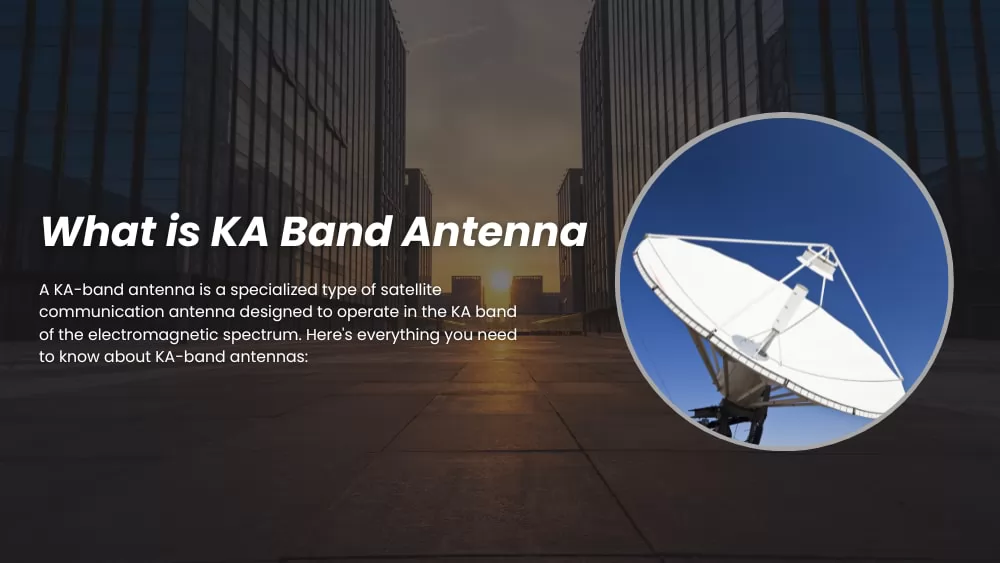
A KA-band antenna is a specialized type of satellite communication antenna designed to operate in the KA band of the electromagnetic spectrum. Here's everything you need to know about KA-band antennas:
1. Frequency Range:
The KA band spans a frequency range typically from 26.5 to 40 gigahertz (GHz). It is higher in frequency than the more commonly used C and Ku bands in satellite communication.
2. High Frequency, High Data Rates:
KA-band antennas are known for their ability to support high-frequency transmissions, making them suitable for high data rate communication. This makes them ideal for broadband internet services, data-intensive applications, and high-definition video streaming.
3. Wide Range of Applications:
KA-band antennas are employed in various applications, including:
Satellite broadband internet services, offering fast and reliable connectivity in both urban and remote areas.
High-definition television (HDTV) broadcasting, especially for direct-to-home (DTH) satellite TV services.
Military and defense communications, where secure and high-speed data transmission is crucial.
Satellite communication for maritime, aviation, and aerospace applications.
4. Smaller Dish Size:
KA-band antennas are characterized by their relatively smaller dish or flat-panel design compared to lower-frequency bands. This makes them more suitable for residential and urban installations where space may be limited.
5. Limited Atmospheric Absorption:
While KA-band frequencies are sensitive to atmospheric conditions, they experience less absorption compared to higher frequency bands like V and W bands. This contributes to their suitability for satellite communication.
6. Point-to-Multipoint Communication:
KA-band antennas are often used for point-to-multipoint communication, allowing one hub or central station to communicate with multiple remote terminals or end-users simultaneously.
7. Ground Stations and Terminals:
KA-band ground stations and user terminals are widely used for uplink and downlink communication. Ground stations are typically equipped with larger dish antennas, while user terminals may have smaller, flat-panel designs for home or business use.
8. Licensing and Regulation:
The use of KA-band frequencies is regulated by government authorities, and licensing is required for operators to ensure interference-free communication.
9. Data Security and Encryption:
Due to their use in military and defense applications, KA-band communication systems often include advanced encryption and security measures to protect sensitive data.
10. Global Coverage:
Satellite operators provide global coverage using KA-band satellites, ensuring that users in different parts of the world can access high-speed internet and other services.
Conclusion
KA-band antennas play a significant role in modern satellite communication, offering fast and reliable data transmission for a wide range of applications. Their compact size, high data rates, and suitability for broadband internet have made them increasingly popular for residential and commercial use, providing users with access to a broad spectrum of services and entertainment.



